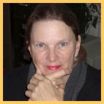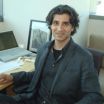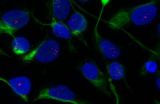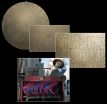(Press-News.org) Marin County, California has one of the highest rates of breast cancer in the world, a fact that scientists know has nothing to do with the land itself but with some other, unknown factor.
A new study that analyzed mouth buccal cell samples stored frozen at the University of California, San Francisco (UCSF) suggests what this factor may be: a genetic trait present among women within the county's predominantly white population.
In an article published online this week by the Journal of the American College of Surgeons, which will appear in the November 2012 print issue, surgeon scientist Kathie Dalessandri, MD, FACS and colleagues at UCSF and the company InterGenetics, Inc. in Oklahoma City describe how, in a small, retrospective pilot study involving buccal cells from 338 women living in Marin, slight variations within the DNA of a human gene for vitamin D receptor were associated with breast cancer risk.
"While the findings must be validated in a much larger, prospective study," Dalessandri warned, "we found that women who were at high risk for breast cancer were 1.9 times more likely to have a specific vitamin D receptor variation than the general population."
A larger, collaborative prospective study in Marin County is ongoing, spearheaded by the Marin County Department of Health and Human Services (www.marinwomensstudy.org). This study includes an examination of breast cancer risk on a scale involving thousands of women.
For now, Dr. Dalessandri said, there is no clear-cut advice on the level of vitamin D needed for breast cancer prevention, but variations in the Vitamin D receptor may be an important modulator of risk.
The discovery does not rule out that there may be other factors involved in the elevated breast cancer risk in Marin County, said Dalessandri, but it gives an important clue moving forward.
After More than a Decade, New DNA Secrets
The first major study to look at the question of why women in Marin County are at higher risk for breast cancer was led by UCSF cancer epidemiologist Margaret Wrensch, MPH, PhD and Georgianna Farren and colleagues from Marin Breast Cancer Watch.
Published in 2003, that study compared 285 women with breast cancer in Marin with 286 local women who did not have the disease, and examined traditional risk factors such as risk of breast cancer based on a woman's at the time of diagnosis of breast cancer, age when menstruation began, age at first live birth, history of breast cancer in first degree relatives, history of breast irradiation, history of benign breast biopsies, and use of hormone replacement therapy that may have accounted for the difference—as well as environmental, lifestyle and nutritional factors.
One important conclusion of that study was that there was nothing about the land itself that was causing breast cancer. A woman's risk of developing breast cancer did not increase according to the amount of time she spent in Marin County. The study also found that women with cancer were more likely to report drinking two or more drinks per day than women without cancer who had lived the same amount of time in Marin County and had the same other risk factors.
The cell samples from the 2003 study had been kept frozen for future research use by UCSF's John Wiencke in his Molecular Epidemiology Laboratory within the UCSF Department of Neurological Surgery. That allowed Dalessandri and her colleagues to collect DNA from the samples were analyzed using new technology developed by Eldon Jupe PhD, of InterGenetics, Inc., and colleagues in recent years.
The technology is an algorithm named OncoVue, a polyfactorial risk model (PFRM) that scores breast cancer risk based on particular genetic variations within the vitamin D receptor and other genes. Looking blindly at the DNA of some 338 Caucasian women from the original study—164 who had breast cancer and 174 who did not—Jupe and his colleagues applied the algorithm and found that it was highly accurate in predicting risk in the Marin County study. The women predicted at highest risk of breast cancer by the algorithm were analyzed to determine the strongest genetic factors contributing to the risk.
They found a genetic variation, known as the Vitamin D Receptor Apa1 A2/A2 homozygous polymorphism, was associated with elevated risk of breast cancer in Marin County women—64 percent of the women at high risk of breast cancer had the genetic trait compared to 34 percent in the overall population, a significant 1.9 fold difference.
If genetic variations in the vitamin D receptor prove to be causally linked to breast cancer, that may help pave the way for new ways to prevent or treat the disease through vitamin D supplementation—though any such approaches would have to prove safe and effective in clinical trials, which can take years to reveal impact.
Other work looking at the factors that might explain the elevated breast cancer risk in Marin County includes the Breast Cancer and the Environment Research Program, a national study coordinated by UCSF investigator Robert Hiatt in the Department of Epidemiology and Biostatistics and the San Francisco Coordination Center. This study is exploring environmental factors that may lower the age of pubertal onset, known to be a risk factor for breast cancer. The local study is being conducted under the leadership of Lawrence Kushi of Kaiser Permanente in Northern California and comprises girls from Marin, San Francisco and Alameda counties recruited from Kaiser Permanente member families prior to puberty and followed to maturity.
INFORMATION:
The article, "Vitamin D Receptor Polymorphisms and Breast Cancer Risk in a High-Incidence Population: A Pilot Study" by Kathie M Dalessandri, Rei Miike, John K Wiencke, Georgianna Farren, Thomas W Pugh, Sharmila Manjeshwar, Daniele C DeFreese and Eldon R Jupe, appears in the November, 2012 issue of the Journal of the American College of Surgeons. See: http://dx.doi.org/10.1016/j.jamcollsurg.2012.06.413
This work was funded through a California Breast Cancer Research Program Community Collaboration Research Grant (5BB-1201), the Marin County Department of Health Services and the Swisher family trust. Dalessandri has received a translational research award from the Komen Foundation in 2008, a Zero Breast Cancer in Marin County Award in 2009, and a California Breast Cancer Research Program Innovative Research Award in 2010 for this project.
UCSF is a leading university dedicated to promoting health worldwide through advanced biomedical research, graduate-level education in the life sciences and health professions, and excellence in patient care. For further information, visit ucsf.edu.
Follow UCSF
UCSF.edu | Facebook.com/ucsf | Twitter.com/ucsf | YouTube.com/ucsf
Marin County's high breast cancer rate may be tied to genetics
Frozen cell samples at UCSF yield new DNA secrets
2012-08-08
ELSE PRESS RELEASES FROM THIS DATE:
A molecule central to diabetes is uncovered
2012-08-08
At its most fundamental level, diabetes is a disease characterized by stress -- microscopic stress that causes inflammation and the loss of insulin production in the pancreas, and system-wide stress due to the loss of that blood-sugar-regulating hormone.
Now, researchers led by scientists at the University of California, San Francisco (UCSF) have uncovered a new key player in amplifying this stress in the earliest stages of diabetes: a molecule called thioredoxin-interacting protein (TXNIP). The molecule, they've discovered, is central to the inflammatory process that ...
Study sheds light on underlying causes of impaired brain function in muscular dystrophy
2012-08-08
The molecular missteps that disrupt brain function in the most common form of adult-onset muscular dystrophy have been revealed in a new study published by Cell Press. Myotonic dystrophy is marked by progressive muscle wasting and weakness, as well as excessive daytime sleepiness, memory problems, and mental retardation. A new mouse model reported in the August 9 issue of the journal Neuron reproduces key cognitive and behavioral symptoms of this disease and could be used to develop drug treatments, which are currently lacking.
"The new animal model reproduces important ...
The first public data release from BOSS, the Baryon Oscillation Spectroscopic Survey
2012-08-08
The Third Sloan Digital Sky Survey (SDSS-III) has issued Data Release 9 (DR9), the first public release of data from the Baryon Oscillation Spectroscopic Survey (BOSS). In this release BOSS, the largest of SDSS-III's four surveys, provides spectra for 535,995 newly observed galaxies, 102,100 quasars, and 116,474 stars, plus new information about objects in previous Sloan surveys (SDSS-I and II).
"This is just the first of three data releases from BOSS," says David Schlegel of the U.S. Department of Energy's Lawrence Berkeley National Laboratory (Berkeley Lab), an astrophysicist ...
EARTH: Shake, rattle and roll
2012-08-08
Alexandria, VA – A team of researchers may have discovered a way to hear earthquakes. Not the noises of rattling windows and crumbling buildings, but the real sounds an earthquake makes deep underground as rock grinds and fails catastrophically. Typical seismic waves have frequencies below the audible range for humans, but the August issue of EARTH shows you where to find the voice of one seismic monster: the March 11, 2011, magnitude-9.0 Tohoku earthquake in Japan.
Beyond the novelty of simply hearing an earthquake, the team found that the new technology could possibly ...
UK hotel industry alive with innovation
2012-08-08
Large hotel chains are quick to adopt and adapt innovations developed in other industries, while smaller hotels make almost continual incremental changes in response to customers' needs. The UK hotel industry is alive with innovation and new ways of improving service for customers, research funded by the Economic and Social Research Council (ESRC) has found.
The findings of a project led by Professor Gareth Shaw of Exeter University and Professor Allan Williams of Surrey University run counter to the traditional image of the hotel sector as slow to change. Official measures ...
Unusual weather events identified during the Black Saturday bushfires
2012-08-08
Research has revealed that the extremely hot, dry and windy conditions on Black Saturday combined with structures in the atmosphere called 'horizontal convective rolls' -similar to streamers of wind flowing through the air - which likely affected fire behaviour.
The study is the first of its kind to produce such detailed, high-resolution simulations of weather patterns on the day and provides insights for future fire management and warning systems.
The work was led by Dr Todd Lane and Ms Chermelle Engel from The University of Melbourne with Prof Michael Reeder (Monash ...
Benefit of PET and PET/CT in ovarian cancer is not proven
2012-08-08
Due to the lack of studies, there is currently no proof that patients with ovarian cancer can benefit from positron emission tomography (PET) alone or in combination with computed tomography (CT). As regards diagnostic accuracy, in certain cases, recurrences can be detected earlier and more accurately with PET or PET/CT than with conventional imaging techniques. This is the conclusion of the final report by the German Institute for Quality and Efficiency in Health Care (IQWiG) in Cologne that was published on 23 May 2012.
More reliable diagnosis is supposed to improve ...
Queen's University Belfast makes significant cancer breakthrough
2012-08-08
A major breakthrough by scientists at Queen's University Belfast could lead to more effective treatments for throat and cervical cancer.
The discovery could see the development of new therapies, which would target the non-cancerous cells surrounding a tumour, as well as treating the tumour itself.
Researchers at Queen's Centre for Cancer Research and Cell Biology have found that the non-cancerous tissue, or 'stroma', surrounding cancers of the throat and cervix, plays an important role in regulating the spread of cancer cells.
The discovery opens the door for the development ...
Scientists discover the truth behind Colbert's 'truthiness'
2012-08-08
Trusting research over their guts, scientists in New Zealand and Canada examined the phenomenon Stephen Colbert, comedian and news satirist, calls "truthiness"—the feeling that something is true. In four different experiments they discovered that people believe claims are true, regardless of whether they actually are true, when a decorative photograph appears alongside the claim. The work is published online in the Springer journal, Psychonomic Bulletin & Review.
"We wanted to examine how the kinds of photos people see every day—the ones that decorate newspaper or TV ...
Humanities mini-courses for doctors sharpen thinking and creativity
2012-08-08
Mini-courses designed to increase creative stimulation and variety in physicians' daily routines can sharpen critical thinking skills, improve job satisfaction and encourage innovative thinking, according to Penn State College of Medicine researchers who piloted a series of such courses.
"For decades, career development theory has identified a stage that occurs at midlife, characterized by a desire to escape the status quo and pursue new ventures," said Kimberly Myers, Ph.D., associate professor of humanities. "It is increasingly clear that these mid-career professionals ...
LAST 30 PRESS RELEASES:
Multifaceted effects of inward foreign direct investment on new venture creation
Exploring mutations that spontaneously switch on a key brain cell receptor
Two-step genome editing enables the creation of full-length humanized mouse models
Pusan National University researchers develop light-activated tissue adhesive patch for rapid, watertight neurosurgical sealing
Study finds so-called super agers tend to have at least two key genetic advantages
Brain stimulation device cleared for ADHD in the US is overall safe but ineffective
Scientists discover natural ‘brake’ that could stop harmful inflammation
Tougher solid electrolyte advances long-sought lithium metal batteries
Experts provide policy roadmap to reduce dementia risk
New 3D imaging system could address limitations of MRI, CT and ultrasound
First-in-human drug trial lowers high blood fats
Decades of dredging are pushing the Dutch Western Scheldt Estuary beyond its ecological limits
A view into the innermost workings of life: First scanning electron microscope with nanomanipulator inaugurated in hesse at Goethe University
Simple method can enable early detection and prevention of chronic kidney disease
S-species-stimulated deep reconstruction of ultra-homogeneous CuS nanosheets for efficient HMF electrooxidation
Mechanical and corrosion behavior of additively manufactured NiTi shape memory alloys
New discovery rewrites the rules of antigen presentation
Researchers achieve chain-length control of fatty acid biosynthesis in yeast
Water interactions in molecular sieve catalysis: Framework evolution and reaction modulation
Shark biology breakthrough: Study tracks tiger sharks to Maui mating hub
Mysterious iron ‘bar’ discovered in famous nebula
World-first tool reduces harmful engagement with AI-generated explicit images
Learning about public consensus on climate change does little to boost people’s support for action, study shows
Sylvester Cancer Tip Sheet for January 2026
The Global Ocean Ship-Based Hydrographic Investigations Program (GO-SHIP) receives the Ocean Observing Team Award
Elva Escobar Briones selected for The Oceanography Society Mentoring Award
Why a life-threatening sedative is being prescribed more often for seniors
Findings suggest that certain medications for Type 2 diabetes reduce risk of dementia
UC Riverside scientists win 2025 Buchalter Cosmology Prize
SETI Institute opens call for nominations for the 2026 Tarter Award
[Press-News.org] Marin County's high breast cancer rate may be tied to geneticsFrozen cell samples at UCSF yield new DNA secrets




